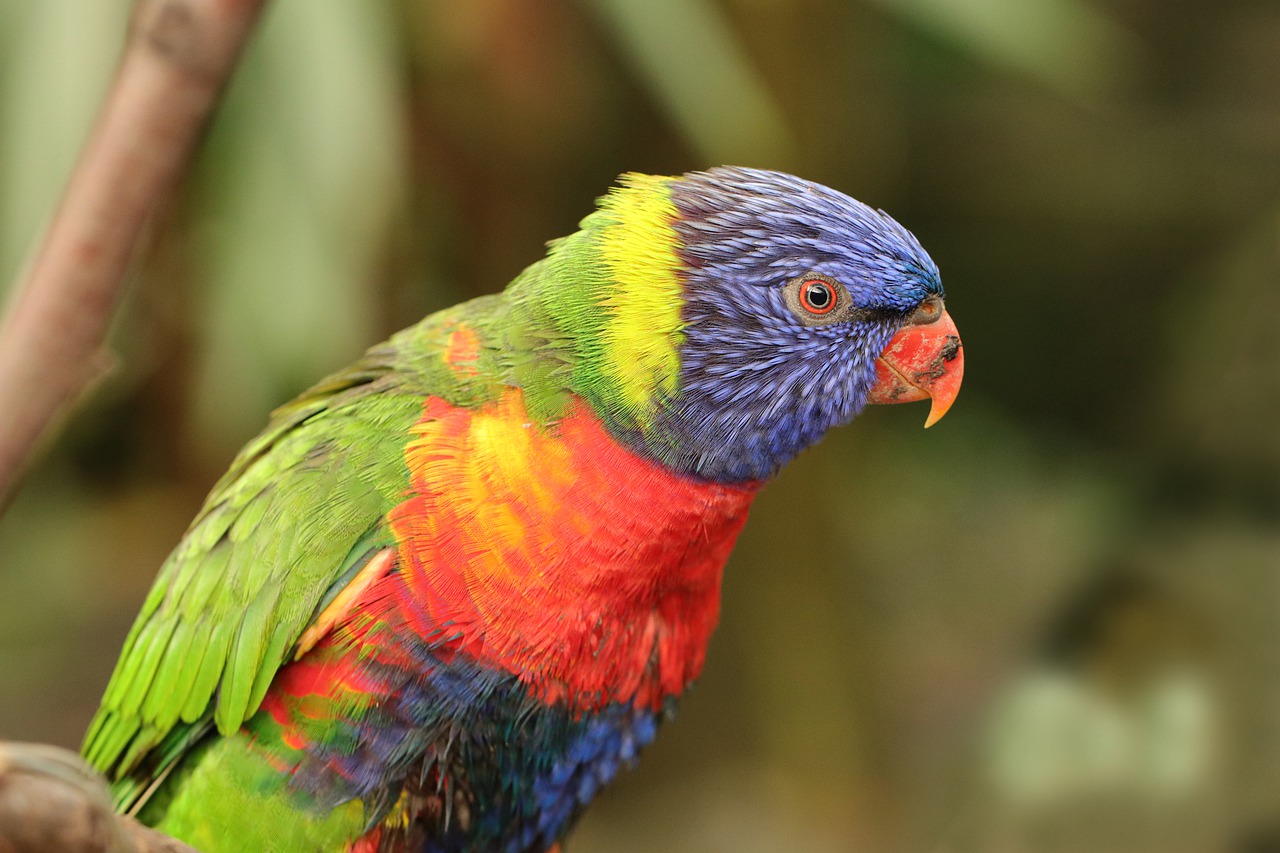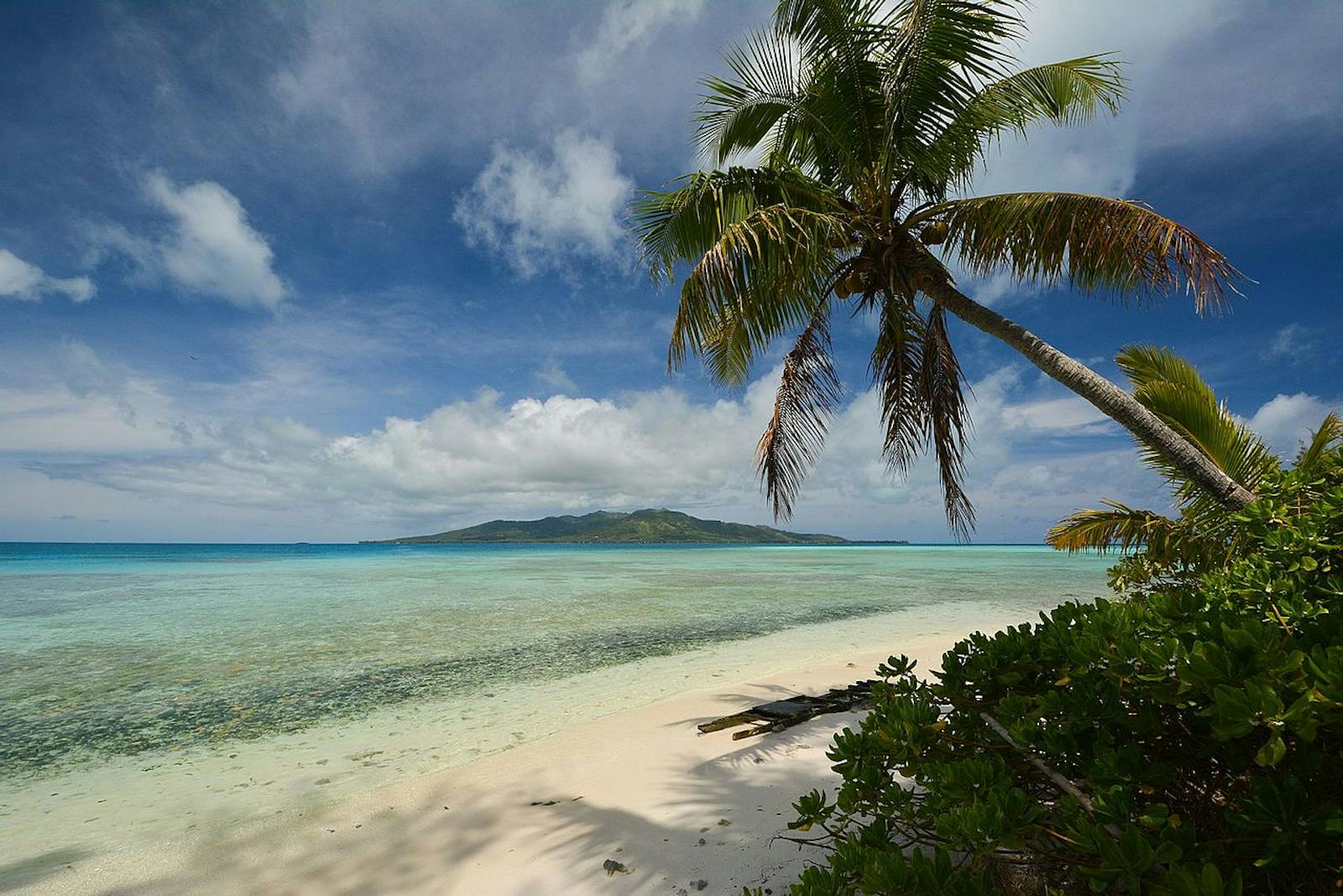Tubuai Tropical Moist Forests
The ecoregion’s land area is provided in units of 1,000 hectares. The conservation target is the Global Safety Net (GSN1) area for the given ecoregion. The protection level indicates the percentage of the GSN goal that is currently protected on a scale of 0-10. N/A means data is not available at this time.
Bioregion: Southeast Polynesian Islands (OC3)
Realm: Oceania
Ecoregion Size (1000 ha):
14
Ecoregion ID:
633
Conservation Target:
0
Protection Level:
N/A
States: French Polynesia
Red, orange, yellow, green, blue, purple, maroon, black―few birds in the world are as brightly colored as Kuhl’s lorikeet. This spectacular bird is native to Tubuai (Austral Islands), an archipelago located south of Tahiti. The lorikeet was introduced to several other islands and ecoregions long ago by Polynesians who value the bird’s red feathers.
Like the Society Islands to the north, the Tubuai Islands are eroded volcanic peaks that are surrounded by uplifted limestone reef. Rimatara, Rurutu, Tubuai, Raivavae, and Rapa are the major islands, with the largest being Tubuai at 44 km2. The ecoregion also encompasses the uninhabited island group, Ilots de Bass (Marotiri), and Maria Atoll. The higher islands are rugged, eroded volcanic peaks surrounded, at times, by upraised limestone shelfs that were once surrounding reefs.

The flagship species of the Tubuai Tropical Moist Forests ecoregion is the Kuhl’s lorikeet. Image credit: Creative Commons
Trees of lowland forests on the high islands includes species that are widespread in Pacific island lowlands: Tournefortia argentea, Scaevola taccada, Barringtonia asiatica, Pandanus tectorius, Pisonia grandis, Suriana maritma, Casuarina equisetifolia, Cerbera manghas, Pemphis acidula, and Allophyus timoriensis. Lowland shrubs and herbaceous plants include Ipomea pescaprae, Ipomea macratha, Lepturus repens, Paspalum vaginatum, Portulaca lutea, Thuarea involuta, Lycium carolinianum, and Hedyotis romanzoffiensis. Hibiscus tiliaceus and Psidium guajava, or Dicranopteris fernlands and grasslands dominate much of the highly altered lowland vegetation presently. Montane rain forests cover the slopes and peaks of the high islands, with mossy cloud forests only occurring on roughly 20 ha from 550 m to 650 m on Mt. Perau on Rapa.
The Tubuai montane flora has affinities with that of New Zealand as well as other nearby archipelagos, and includes the genera Hebe, Olearia, Haloragis, and Corokia. Montane and cloud forests are hotspots for Austral Island (and single island) endemic species. The cloud forest has many epiphytes and diverse ferns, including Marattia and Angiopteris. Metrosideros collina, the island endemic trees Weinmannia rapensis and Corokia collenettei, and the tree fern Cyathea stokesii are the dominant cloud forest species.
Other island endemic trees and shrubs found in Rapa’s small cloud forest include Apetahia margaretae, Claoxylon collenettei, Coprosma spp., Eurya rapensis, Hedyotis rapensis, Meryta spp., Myrsine spp., Oparanthus coriaceus, Styphelia rapae, and Vaccinium rapae. Island endemic herbs in the cloud forest include Astelia rapensis, Carex stokesii, the very rare native epiphytic orchid Liparis clypeolum, the rare island endemic shrubs Geniostoma rapense and Melicope margaretae, and sub-shrubs Haroldiella rapensis and Pilea occulta found in wetter gullies. Pacifigeron rapensis is one of seven endemic genera found on Rapa. Endemic epiphytic ferns are found on mossy logs including Elaphoglossum spp., Loxogramme parksii, Grammitis maireaui, and Calymnodon spp.
In Rapa’s cloud forests are 89 plant species, with 51 (57%) endemic species and several endemic plant genera including Apetahia, Fitchia, Haroldiella, Oparanthus, and Pacifigeron. Overall, Tubuai has approximately 150 plant species with high level of endemism (for example, 20% of the Rimitara flora is single island endemic and 57% of Rapa’s cloud forest flora). Maria atoll supports typical Eastern Polynesian atoll vegetation.
Rimatara and Rurutu were the original home of the endemic Kuhl’s lorikeet, where they were extirpated. The Rimatara reed-warbler is strictly endemic to Rimatara. Rapa Island is home to the endemic Rapa fruit-dove, confined to 3 km2 of higher elevation forest fragments. Several native invertebrate lineages display pronounced diversification and high levels of endemism. For example, the weevil genus, Micalles, has radiated into 67 described species on Rapa in an area of 40 km2. There are more than 100 partulid land snail species on Rapa. Richness and endemism of this group on Rapa and other islands deserves further investigation.
Lowland vegetation throughout the high islands has been largely altered through settlement, cultivation, burning, erosion, and livestock. Few forest remnants remain in the lowlands, though the atoll vegetation of Maria atoll is largely intact. Patches of montane forest remain on several of the higher islands, such as Tububai, Rapa, and Rurutu.
The priority conservation actions over the next decade are to:
- strengthen protection through fencing and population control of invasive rat, cat, and plant in habitat remaining in the summit fragments of Mt. Taitaa, Mt. Tonarutu, and Mt. Tavaetu on Tubuai and Mt. Taatioe on Rurutu, where significant stands of Metrosideros collina and Xylosoma suaveolens and many endemic plants and invertebrates are still present;
- ensure effective protection of the makatea forest at Plateau Paparai, Rurutu as this mixed Dodonea viscosa shrubland forest is the largest in size outside of the Marquesas and has many endemic invertebrates;
- control Norway rat and feral cat populations on Rimatara to protect the threatened Kuhl’s lorikeet.
Citations
- Englund RA (editor). 2004. Report for the 2003 Pacific Biological Survey, Bishop Museum Austral Islands, French Polynesia Expedition to Tubuai and Rurutu. Contribution No. 2004-001 to the Pacific Biological Survey. Délégation à la Recherche (Ministère de la Promotion des Ressources Naturelles), Papeete, Tahiti, Polynésie française.
- Meyer J-Y. 2002. Rapport de mission d'exploration botanique à Tubuai et Rapa (Australes) du 13 mars au 5 avril 2002. Délégation à la Recherche, Papeete, 26 pages.
- Mueller-Dombois D, FR Fosberg, editors. 1998. Vegetation of the Tropical Pacific Islands. Springer-Verlag, New York.



